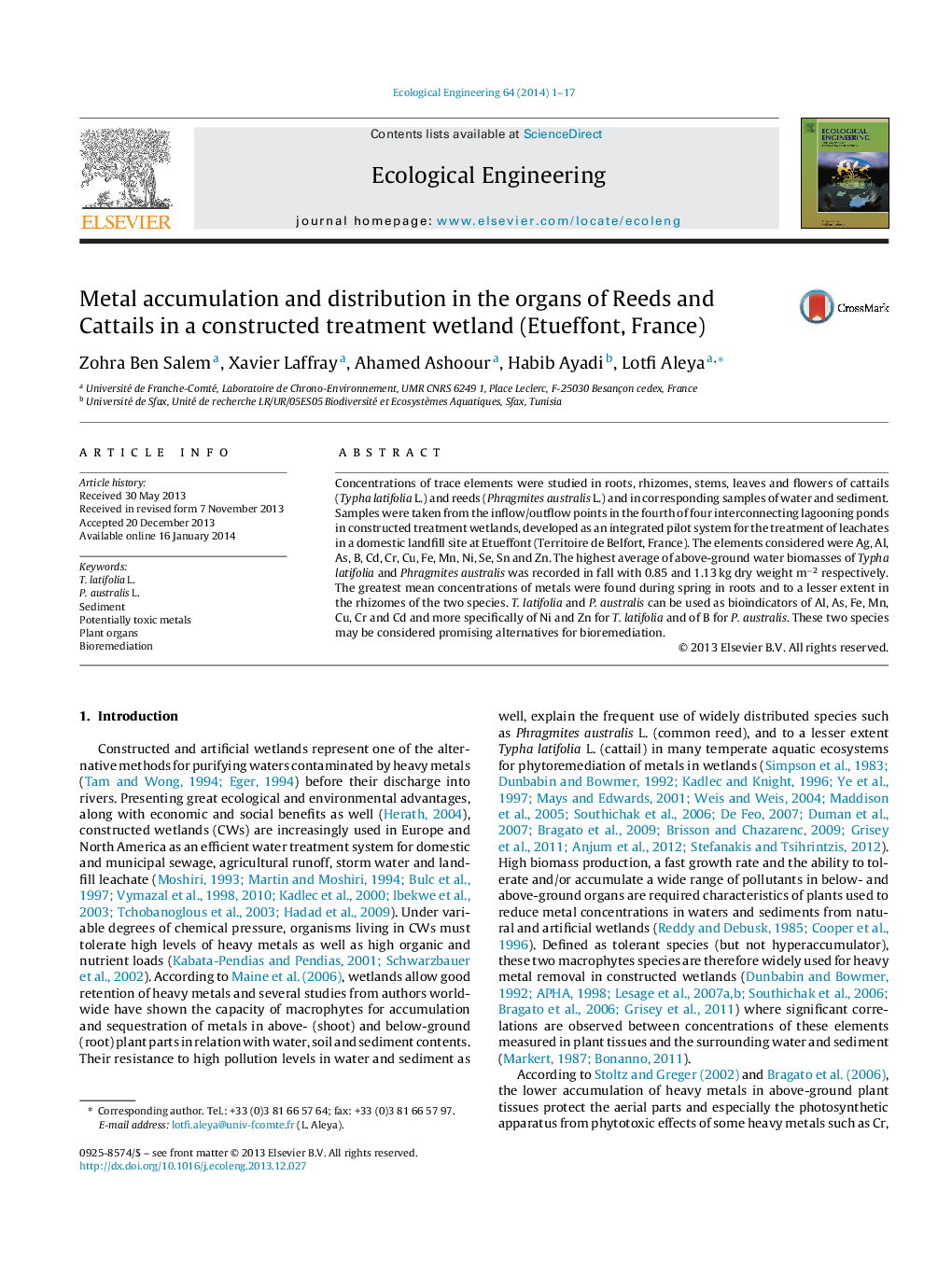| Article ID | Journal | Published Year | Pages | File Type |
|---|---|---|---|---|
| 4389557 | Ecological Engineering | 2014 | 17 Pages |
Concentrations of trace elements were studied in roots, rhizomes, stems, leaves and flowers of cattails (Typha latifolia L.) and reeds (Phragmites australis L.) and in corresponding samples of water and sediment. Samples were taken from the inflow/outflow points in the fourth of four interconnecting lagooning ponds in constructed treatment wetlands, developed as an integrated pilot system for the treatment of leachates in a domestic landfill site at Etueffont (Territoire de Belfort, France). The elements considered were Ag, Al, As, B, Cd, Cr, Cu, Fe, Mn, Ni, Se, Sn and Zn. The highest average of above-ground water biomasses of Typha latifolia and Phragmites australis was recorded in fall with 0.85 and 1.13 kg dry weight m−2 respectively. The greatest mean concentrations of metals were found during spring in roots and to a lesser extent in the rhizomes of the two species. T. latifolia and P. australis can be used as bioindicators of Al, As, Fe, Mn, Cu, Cr and Cd and more specifically of Ni and Zn for T. latifolia and of B for P. australis. These two species may be considered promising alternatives for bioremediation.
